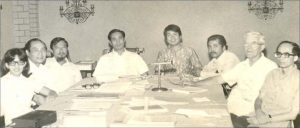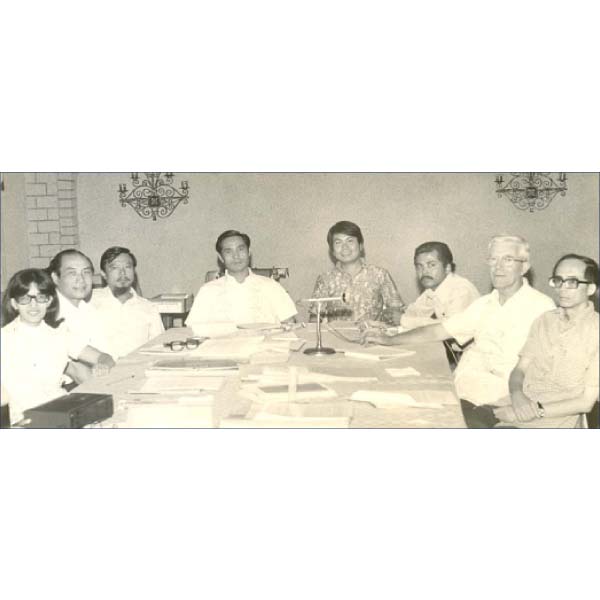
As a young student at Xavier School in the 1980s, I felt that the building we called the “Fathers’ House” was mysterious. It seemed like a fortress, the private quarters of the international group of Jesuits that ran the school. It was a special treat whenever our Jesuit Guidance Counselors would take us there for a Class Mass.
During those special moments, I would often notice an elderly American Jesuit quietly reading in the patio.
I found out later that his name was Fr. Charles J. McCarthy, whose biography has just been published abroad (China’s Last Jesuit by Amanda C.R. Clark).
Kaisa Para Sa Kaunlaran may be turning 30 years old this year, but its history really starts much earlier as Pagkakaisa sa Pag-Unlad, a movement dating from the early 1970s that advocated the integration of the ethnic Chinese into Philippine life.
McCarthy, after a dramatic life as a Jesuit missionary in China, had settled in the Philippines and devoted himself to advocating for the rights and well-being of the Chinese who were born, lived, and expected to die in the Philippines.
He wrote and lectured on various aspects of this advocacy, and worked tirelessly to convince the government to adopt the jus soli principle of citizenship so that the Chinese could become full members of Philippine society. His definiton of the term “Filipino-Chinese” became classic and continues to be quoted today.
As the Chinese community’s roots sank deeper into Philippine society, a new term came into vogue. The local Chinese were “Tsinoy” or Chinese Filipino, and the fact that this term has become mainstream is the legacy of Kaisa, organized as such 30 years ago after the People Power revolution of 1986 allowed people’s organizations to flourish again (Pagkakaisa had been forced to fold up during the martial law era).
In 1989, I was a young college freshman at the Ateneo de Manila when I wrote a strong and perhaps emotional reaction to a government official’s judgment that the Chinese were to blame for the country’s economic problems.
My piece, defending the Chinese and imagining the effect on the economy if the Chinese were to go on strike for just one day, was published in the Inquirer, and Teresita Ang See later told me that it “stirred a hornet’s nest” because the role of the ethnic Chinese in Philippine life was being fiercely debated in those days when the economy was struggling to recover under the nascent leadership of President Corazon Aquino.
Thus began my correspondence with Tessy. I followed with much interest the publication of Tulay Fortnightly and the various publications of Kaisa, especially the series on The Chinese in the Philippines.
I joined the Jesuits after college graduation in 1993, and became quite involved in the Church’s Chinese-Filipino Apostolate, a work that was inspired by the legacy of Fr. McCarthy. When, in 1999, the Jesuits were reviewing and ultimately renewed our commitment to the Chinese apostolate, we turned to Tessy and to the publications of Kaisa for input.
Meanwhile, Bahay Tsinoy had been inaugurated in 1999 and was blessed by my spiritual director at that time, Fr. Ben Sim, SJ. When I became president of Xavier School in 2013, one of the first things I did was to revive the Social Studies module on the Chinese in Philippine life, which included a visit to Bahay Tsinoy.
Over the years, I have contributed articles to Tulay and supported the work of Kaisa through collaborations with the Ateneo de Manila Chinese Studies Program and the Philippine Association of Chinese Studies, where I have also been involved.
More recently, I convinced a small group of Xavier alumni and students to create a simple website so that Tulay content could be made readily available online. It is my fervent hope that the work of Kaisa and Tulay will continue to be relevant in the 21st century, and for this digital tools are indispensable. I think this strategy needs urgent attention.
The face of the Chinese Filipino is changing as global forces shape our present way of life. Kaisa has a very important role to play as we preserve and celebrate our Chinese-Filipino heritage.
As patriotic Filipinos, we are also in a unique position to help the country engage China meaningfully. This Jesuit is honored and happy to be associated with Kaisa.





